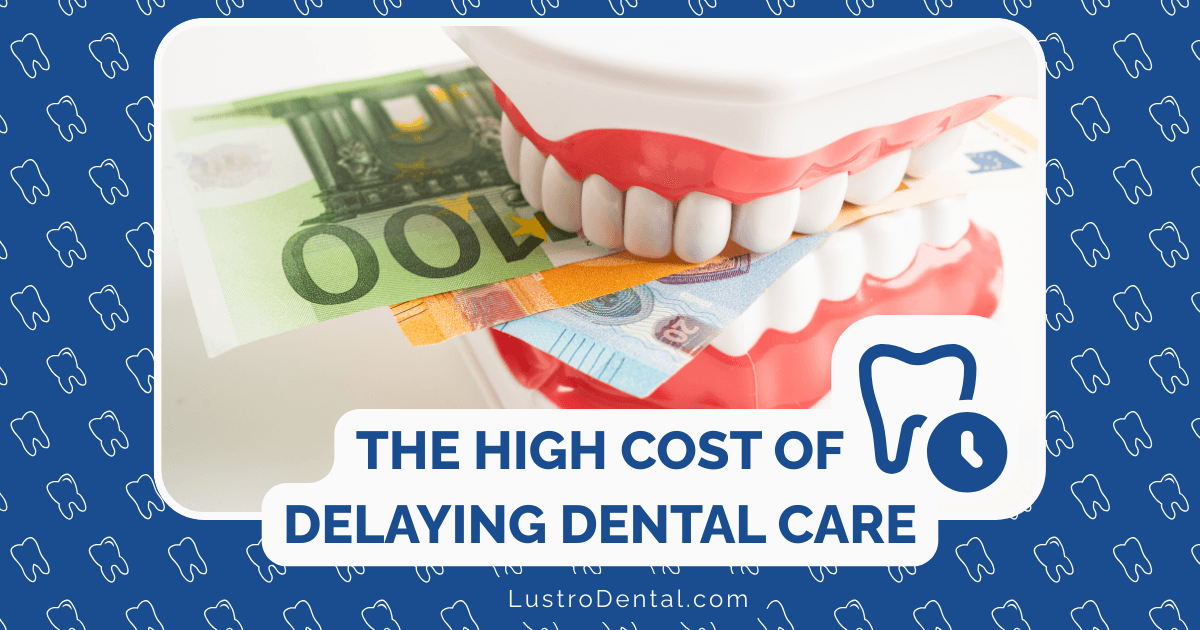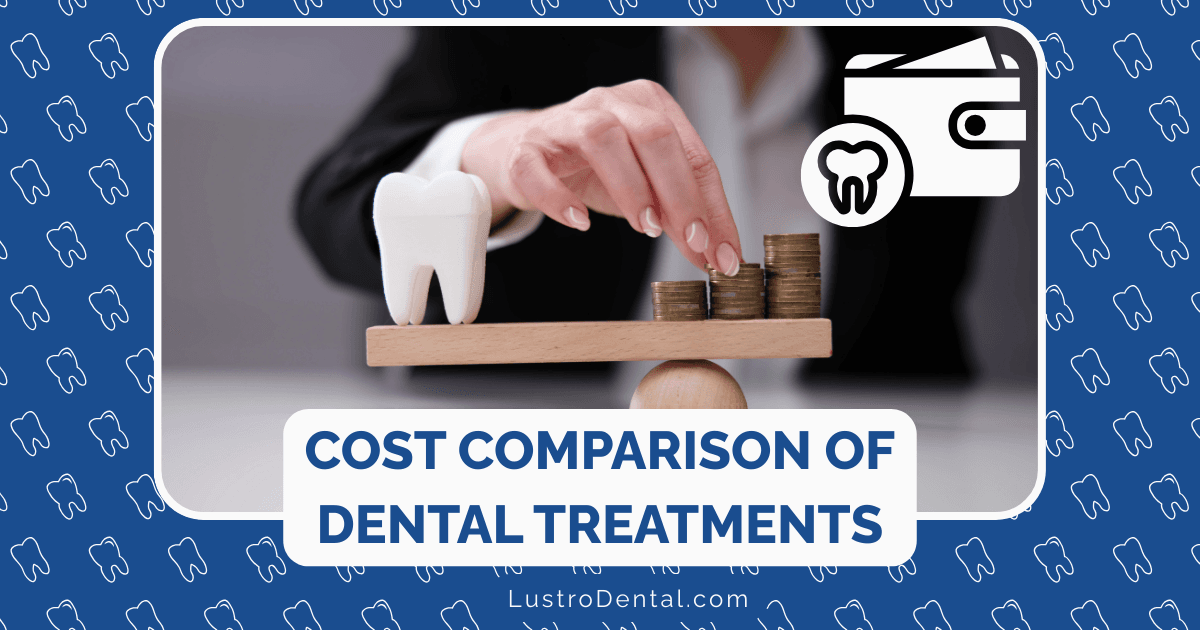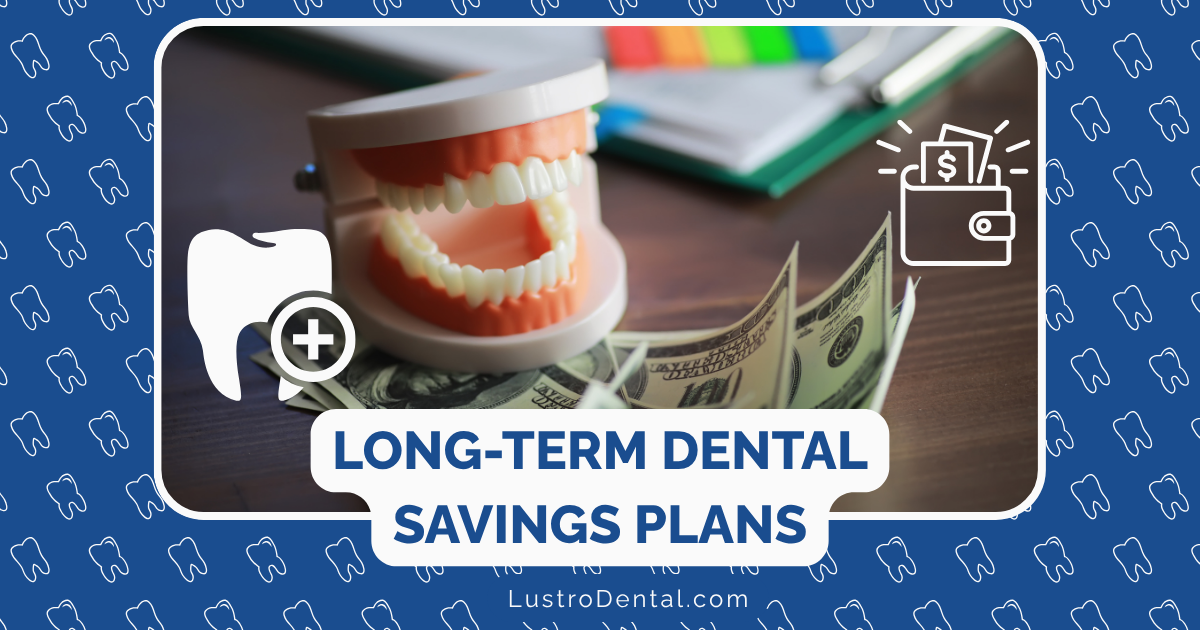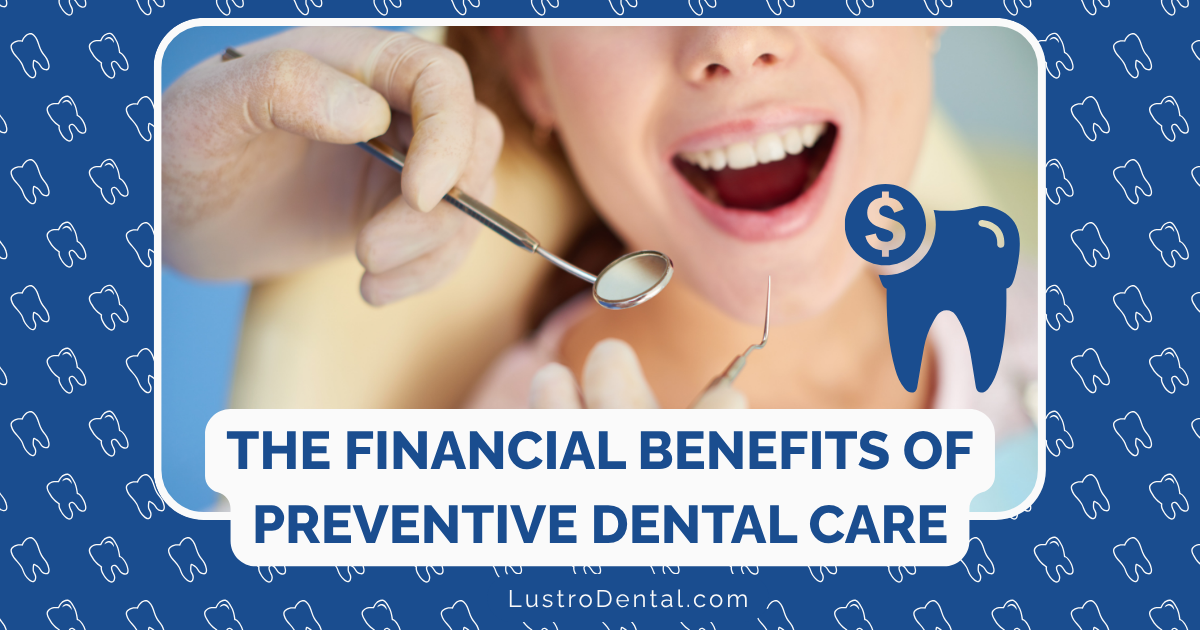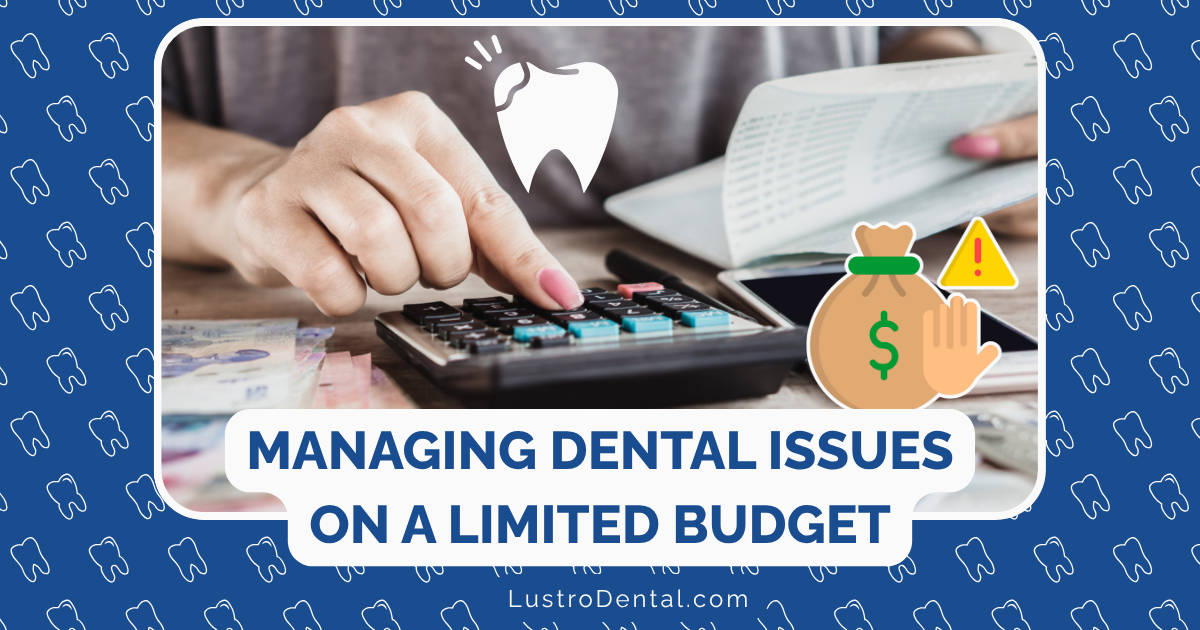Phased Treatment Plans: Breaking Down Big Dental Work into Affordable Stages
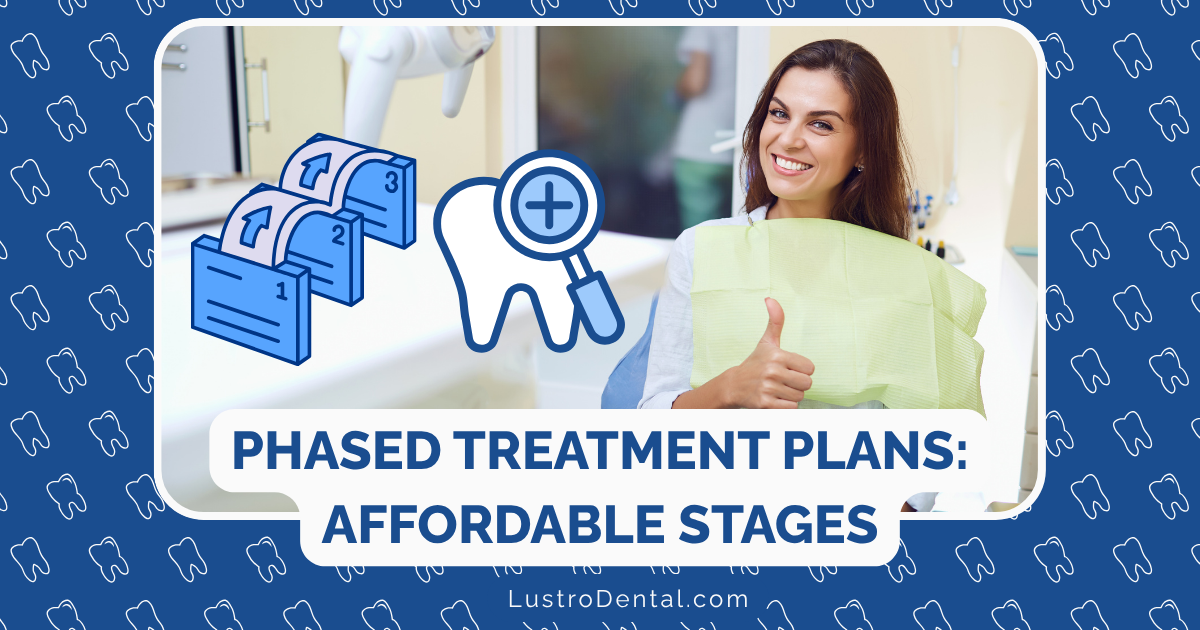
You’ve just sat through your dentist’s comprehensive examination, and now you’re staring at a treatment plan that looks more like a car payment than dental work. $12,000 for multiple crowns, a root canal, and that implant you’ve been putting off? Might as well be a million dollars if it’s not in your budget right now.
But what if you didn’t have to choose between your financial health and your dental health? What if there was a middle path?
Enter phased treatment planning—the strategic approach to breaking down extensive dental work into manageable, prioritized stages that protect both your oral health and your wallet.
According to the American Dental Association, cost remains the primary reason people avoid dental care, with 59% of adults reporting they’ve delayed treatment due to financial concerns. Phased treatment plans offer a practical solution to this widespread problem.
What Exactly Is a Phased Dental Treatment Plan?
A phased dental treatment plan divides comprehensive dental work into distinct stages, spread out over time. Rather than completing all recommended procedures at once, treatment is sequenced based on urgency, biological considerations, and financial feasibility.
As described in the Journal of Conservative Dentistry, proper treatment sequencing involves several distinct phases:
Phase 1: Urgent Care
Addressing immediate problems causing pain, infection, or rapid deterioration.
Phase 2: Stabilization
Halting active disease processes like decay and gum disease.
Phase 3: Re-evaluation
Assessing how the mouth has responded to initial treatment.
Phase 4: Definitive Restorative Work
Completing long-term solutions like crowns, bridges, or implants.
Phase 5: Maintenance
Preserving the results through ongoing preventive care.
By breaking treatment down this way, you address critical needs first while creating breathing room for your budget to recover between phases.
The Financial Benefits of Phased Treatment
Phased treatment plans offer several financial advantages beyond simply spreading out payments:
1. Insurance Maximization
Most dental insurance plans have annual maximums between $1,000-$2,000. Phasing treatment across multiple calendar years allows you to utilize fresh insurance benefits for each stage.
Example:
- Single-year approach: $4,500 treatment plan with $1,500 insurance coverage = $3,000 out-of-pocket
- Two-year phased approach: Same treatment split across two benefit years = $1,500 out-of-pocket ($750 per year)
2. Flexible Savings Opportunities
Phasing creates windows for financial preparation between treatment stages.
Strategies include:
- Contributing to HSA/FSA accounts between phases
- Setting up dedicated savings for upcoming treatment
- Taking advantage of tax returns or bonuses for specific phases
3. Prioritized Spending
Not all dental problems pose the same risk or require the same urgency. Phasing allows you to address critical issues first while deferring less urgent matters.
According to Delta Dental, addressing high-priority dental issues early often prevents them from becoming more complex and expensive problems later.
4. Avoiding Debt and High-Interest Financing
By breaking treatment into manageable chunks, many patients can pay as they go rather than taking on dental financing with interest rates that can reach 15-25%.
Clinical Benefits Beyond Cost Savings
Phased treatment isn’t just about financial convenience—it often provides clinical advantages as well:
1. Better Healing and Adaptation
Some dental procedures benefit from a staged approach, allowing tissues to heal and adapt before proceeding to the next phase.
Example: In cases of significant bone loss, preliminary grafting may need several months of healing before implant placement can occur.
2. Test Drives for Major Changes
Phasing allows patients to adapt to changes gradually rather than all at once.
Example: For patients transitioning from natural teeth to dentures, temporary prosthetics can allow adjustment before investing in final appliances.
3. Opportunity for Course Correction
Phased treatment provides checkpoints to assess progress and make adjustments if needed.
Example: After initial periodontal therapy, some areas may respond better than others, allowing for targeted follow-up rather than a one-size-fits-all approach.
Real-World Phased Treatment Examples
Let’s look at how phased treatment works in practice with some common scenarios:
Scenario 1: Full Mouth Rehabilitation
Total Treatment Need: Multiple crowns, two implants, and periodontal therapy Estimated Total Cost: $15,000-$20,000
Phase 1: Urgent/Stabilization (Months 1-3)
- Periodontal therapy to control gum disease
- Treatment of active decay and any needed extractions
- Cost: $2,000-$3,000
Phase 2: Foundation Work (Months 4-6)
- Root canals for compromised teeth
- Build-ups for severely damaged teeth
- Implant placement for missing teeth
- Cost: $4,000-$6,000
Phase 3: Restorative Work (Months 7-12)
- Crowns for back teeth
- Implant abutments and crowns
- Cost: $5,000-$7,000
Phase 4: Anterior Aesthetics (Months 13-18)
- Front teeth crowns and veneers
- Final adjustments and polishing
- Cost: $4,000-$5,000
Financial Benefit: Treatment spread across two insurance benefit years, with time to save between phases.
Scenario 2: Implant-Supported Denture
Total Treatment Need: Extractions, bone grafting, implants, and full denture Estimated Total Cost: $20,000-$30,000
Phase 1: Preliminary Work (Months 1-3)
- Necessary extractions
- Initial bone grafting if needed
- Immediate temporary denture
- Cost: $3,000-$5,000
Phase 2: Implant Placement (Months 4-6)
- Strategic implant placement (typically 4-6 implants)
- Healing time
- Cost: $8,000-$12,000
Phase 3: Final Restoration (Months 7-12)
- Fabrication of implant-supported denture
- Adjustments and follow-up
- Cost: $9,000-$13,000
Financial Benefit: Allows patient to spread major expenses across multiple financial quarters or tax years, potentially qualifying for medical expense tax deductions in multiple years.
How to Request and Plan for Phased Treatment
If you’re facing extensive dental work, here’s how to approach phased treatment planning:
1. Ask Specifically for a Phased Approach
Many dentists default to presenting comprehensive treatment plans without explicitly discussing phasing options. Be direct about your needs:
“I understand all this work needs to be done, but my budget can’t handle it all at once. Could we discuss breaking this into phases based on what’s most urgent?”
2. Understand the Priorities
Ask your dentist to clearly identify which procedures are:
- Urgent (addressing pain, infection, or rapidly progressing conditions)
- Important but stable (can wait 3-6 months)
- Elective or primarily cosmetic (can be deferred longer)
This prioritization becomes the foundation of your phased plan.
3. Get a Written Plan with Timelines
Request a written phased treatment plan that includes:
- Specific procedures in each phase
- Estimated costs per phase
- Recommended timeline between phases
- Consequences of delaying each phase
4. Coordinate with Insurance Cycles
If you have dental insurance, align your treatment phases with your benefit year to maximize coverage.
Strategy: Schedule major work in November/December and January/February to utilize two years’ worth of benefits for related procedures.
5. Discuss Payment Options for Each Phase
For each treatment phase, explore:
- Pre-payment discounts
- In-house payment plans
- Third-party financing (if necessary)
- Health Savings Account (HSA) or Flexible Spending Account (FSA) utilization
Potential Downsides and How to Mitigate Them
Phased treatment isn’t without potential drawbacks. Here’s what to watch for and how to address these concerns:
1. Risk of Interim Complications
Concern: Problems could worsen between phases. Mitigation: Adhere strictly to recommended timelines and maintenance protocols between phases.
2. Multiple Recovery Periods
Concern: Phasing means recovering from dental procedures multiple times. Mitigation: Schedule phases around your life events and work demands.
3. Potential for Changing Costs
Concern: Dental fees may increase between phases. Mitigation: Ask if your dentist will honor original fee quotes for a specific period (many will guarantee prices for 6-12 months).
4. Psychological Fatigue
Concern: Treatment fatigue can lead to abandoning later phases. Mitigation: Set concrete dates for future phases and perhaps pre-pay portions to maintain commitment.
Questions to Ask Your Dentist About Phased Treatment
To ensure you’re getting an appropriate phased plan, ask:
- “What are the risks of delaying each portion of treatment?”
- “How much time can safely pass between phases?”
- “Will completing treatment in phases affect the final outcome?”
- “Are there additional costs associated with phasing versus doing everything at once?”
- “If we phase treatment, can you guarantee today’s prices for future phases?”
Who Benefits Most from Phased Treatment?
While phased treatment can work for many patients, it’s particularly beneficial for:
Self-Pay Patients
Those without dental insurance who must cover the entire cost out-of-pocket.
Patients with Basic Dental Insurance
Those with limited annual maximums who need to strategically use benefits across multiple years.
Patients Needing Complex Interdisciplinary Care
Those requiring coordination between multiple specialists where treatment naturally occurs in stages.
Patients with Financial Uncertainty
Those facing job transitions or other financial variables who need flexibility in treatment timing.
When Phasing May Not Be Appropriate
Some situations don’t lend themselves well to phased treatment:
- Acute infections or pain requiring immediate comprehensive care
- Interdependent procedures where the success of one depends on completing another
- Cases where temporary measures would fail before the next phase
- Situations where phasing would significantly increase the total cost
The Bottom Line
Phased dental treatment plans represent a practical middle ground between neglecting necessary dental work and taking on financial strain. By working with your dentist to prioritize treatment based on urgency and spreading costs over time, you can address your dental needs without compromising your financial wellbeing.
Remember that good communication is essential—be upfront about your budget constraints while showing commitment to completing the necessary treatment over time. Most dentists would rather work with you on a realistic phased plan than see you walk away from treatment altogether.
Have you experienced phased dental treatment? Share your experience and tips in the comments below!


